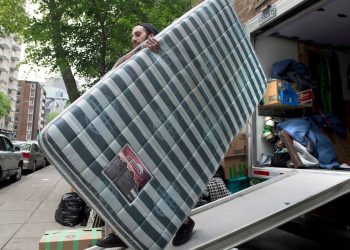What’s a household RESP?
Canadians can select from two forms of RESPs: particular person and household. Each are registered accounts, which means that they’re registered with the federal authorities, and so they permit your financial savings and investments to develop on a tax-sheltered foundation.
Listed here are the important thing options you must find out about for each forms of RESPs:
- The lifetime RESP contribution restrict per beneficiary (baby) is $50,000.
- A beneficiary can have a couple of RESP (for instance, if a guardian opens one and a grandparent opens one), nevertheless, the utmost contribution remains to be $50,000.
- The Canada Schooling Financial savings Grant (CESG) matches 20% of the primary $2,500 in RESP contributions per 12 months. That’s $500 in free cash per 12 months!
- If your loved ones’s adjusted revenue is under a certain quantity (for 2023, it was $106,717), you can too obtain the “Further CESG,” which provides as much as $100 extra, after you contribute your first $500 per 12 months.
- The CESG’s lifetime most, together with Further CESG, is $7,200 per baby.
- Low-income households additionally obtain the Canada Studying Bond (CLB), with no private contribution required, to a lifetime most of $2,000 per baby.
- Households in British Columbia and Quebec have entry to extra grants: $1,200 in British Columbia and as much as $3,600 in Quebec. (Learn extra about these provincial RESP grants.)
- You gained’t get a tax deduction for contributing to an RESP such as you would with a registered retirement savings plan (RRSP), however your contributions gained’t be taxed when withdrawn.
- Authorities grants and development inside an RESP are taxed when withdrawn, however they’ll be taxed on the baby’s marginal tax price—which can seemingly be very low.
- You’ll be able to flip a person RESP right into a household RESP anytime, in addition to add and take away beneficiaries from the plan.
Tips on how to pay for college and have a life—a information for college students and fogeys
Now that we’ve coated RESP fundamentals, let’s sort out 5 of the most typical questions on household RESPs.
1. How are funds in a household RESP divided amongst beneficiaries?
Right here’s the place the pliability of a household RESP comes into play. Exterior of the CLB, authorities grants and the expansion on the investments might be shared among the many plan’s beneficiaries—and the quantities don’t need to be equal. So, if one baby’s schooling prices greater than one other’s, you’ll be able to divide the funds accordingly. You can too begin utilizing RESP funds for one baby’s post-secondary schooling whereas one other remains to be in grade college and amassing grant cash. It’s good to have that flexibility.
2. What if a number of beneficiaries don’t use their RESP funds?
In a household RESP, one baby’s unused funds might be allotted to a different baby’s schooling. If not one of the beneficiaries attend college, you could possibly maintain the plan open in case they alter their thoughts.
You might additionally switch any unused revenue within the RESP to your or your companion’s RRSP as an Accrued Revenue Cost (AIP). The switch restrict is $50,000, and you would need to return any authorities grants. Three different necessities to concentrate on: You have to have sufficient RRSP contribution room to make the switch; the RESP will need to have been open for no less than 10 years; and the beneficiaries should be age 21 or older and never pursuing additional schooling.
In the event you don’t intend so as to add any extra beneficiaries to the plan, and also you don’t want the RESP any longer, you could possibly shut it. If eligible, your authentic contributions can be withdrawn tax-free, however you’ll pay taxes on any funding good points—except they’re transferred to your RRSP as an AIP.










